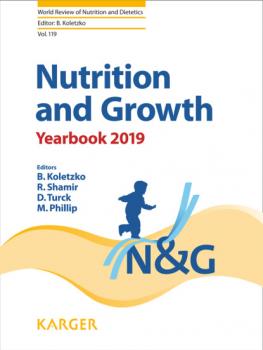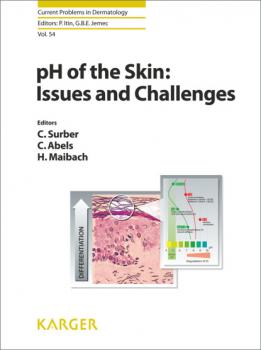Медицина
Различные книги в жанре МедицинаNurturing a Healthy Generation of Children: Research Gaps and Opportunities
Nutrition during infancy and childhood is the basis of an individual’s health in later life. It plays an important role in metabolic programming, physiological growth, and cognition. Diet and eating behavior can provide important insights as food choices and dietary habits go hand in hand with nutrition. This book highlights the importance of childhood diets, eating behaviors, and their potential impacts on development and health. The first part examines the development of taste in infants: It shows how taste preferences are shaped in utero and throughout weaning, and how they guide the individual’s later food choices. The second part focuses on what children really eat in different parts of the world. FITS (Feeding Infants and Toddlers Study) and KNHS (Kids Nutrition and Health Study) provide a glimpse into the diets of children around the world, identifying nutrition gaps and potential areas for intervention. The last part deals with breakfast and its significance as the most important meal of the day. The insights presented in this book provide valuable information for policy makers, researchers, and health care professionals.
Hypopharyngeal Cancer
In most published literature hypopharyngeal cancer is discussed in combination with larynx cancer. This volume is dedicated exclusively to hypopharyngeal cancer. It is a compilation by recognized head and neck oncology experts, who have extracted from published literature and from their own clinical practice, an up-to-date review and commentary on the management of hypopharyngeal cancer. All aspects of hypopharyngeal cancer have been reviewed. They include epidemiology, diagnosis, staging of disease, laser and robotic surgery, chemoradiotherapy, rehabilitation, options of treatment in health care restricted communities, supportive care, and future perspectives. The publication addresses head and neck clinicians and surgeons as well as radiologists, pathologists, medical and radiation-oncologists, and epidemiologists. Health care purchasers, supportive care clinicians, and general medical and dental practitioners will also benefit from this concise update.
Nutrition and Growth
Optimal nutrition is difficult to achieve. Insufficient energy and nutrient intake leads to inadequate growth, whereas too much can result in increased risk of non-communicable diseases (mainly obesity) and may adversely affect children with chronic diseases. Our understanding of the pathophysiology of inappropriate growth and the pathways involved in optimal and catch-up growth is constantly evolving. There is also new data emerging on the role of genes and the interaction between nutrition and epigenetic changes involved in growth, as well as on the interplay between nutrition and growth factors and hormones in health and disease states. In this latest yearbook, noted specialists present leading studies related to various aspects of nutrition and growth published between July 2017 and June 2018. Each study is summarized, with comments, providing additional and helpful views of interpretation. The book will provide useful and valuable information for health care providers, physicians, nurses, dieticians, scientists, and anyone else interested in nutrition.
Disorders of Fluid and Electrolyte Metabolism
It is well known that acute, severe hyponatremia is a life-threatening situation. However, there is growing evidence that mild and chronic hyponatremia may also have negative consequences. Gait disturbances, attention deficits, falls and fractures, and bone loss have all been reported, with increased mortality in almost every disease state if the patient is hyponatremic. This book has been written by key opinion leaders in the field and covers a spectrum of crucial aspects of hyponatremia, including a historical perspective, physiology and pathophysiology of water homeostasis, epidemiology of hyponatremia, and clinical features. A detailed description of all available therapies has been incorporated, with a guide to a clinician’s approach to key therapeutic situations. Hyponatremia is a topic that encompasses all areas of medicine, so this book will be of interest to specialists such as endocrinologists, nephrologists and internists, but will also be a valuable resource for all clinicians who manage patients with hyponatremia.
Vestibular Disorders
This collection of articles on the latest developments is written by experts in various sub-disciplines – medical and paramedical – of vestibular disorders. Contributions discuss various manifestations of vestibular disorders and how to diagnose and treat them. The different areas are put into context to support the clinician in the diagnosis and treatment of patients with dizziness, imbalance, and vertigo. New diagnostic tools are presented as are new approaches to the understanding of clinical signs and underlying pathologies. Otolaryngologists seeking to provide up-to-date assessment and care will find this publication a valuable and indispensable read. The contributions presented appeal not only to otolaryngologists of all levels of experience, but also to front-line clinical staff.
Syphilis & Co.
Sexuell übertragbare Erkrankungen wie Syphilis und Co. treten seit einigen Jahren wieder deutlich häufiger auf. Ein gesundes Wissen zu diesem Thema gehört zum Führerschein des Lebens und ist der beste Schutz vor unangenehmen Überraschungen. Oder hätten Sie gewusst, vor welchen Erkrankungen auch Kondome nicht zuverlässig schützen? Anhand von Anekdoten und Beispielen aus vielen Sprechstunden gibt Dr. med. Peter Weisenseel Einblick in den Umgang mit sexuell übertragbaren Erkrankungen und deren Randgebieten: ohne moralischen Imperativ, dafür feinfühlig und mit charmantem Humor – damit das hängenbleibt, was soll, und das, was es zu vermeiden gilt, gar nicht erst haften bleibt. Für ein gutes Gefühl am Morgen danach.
Recent Advances in Dialysis Therapy in Japan
The number of dialysis patients, and their ages, continues to increase globally. This creates major issues such as rising medical costs in an aging population, how to best manage end-of-life care, and how to train the various practitioners involved in dialysis care. After the US and China, Japan occupies 3rd place with regard to the number of dialysis patients and is also widely regarded as a world leader in dialysis. This book contains selected articles – organized into 4 chapters – that discuss recent advances in dialysis therapy in Japan. Chapter 1 presents insights into causes, risk factors, disease associations, and possible implications for management of dialysis patients. Chapter 2 examines recent progress in hemodialysis treatment, and chapter 3 focuses on developments in peritoneal dialysis. The final chapter concentrates on recent advances in apheresis and current trends in practice, among other topics. This book is aimed at nephrologists, physicians, urologists, nurses, clinical engineers, pharmacists, and nutritionists. It is a significant contribution to furthering the progress of dialysis therapy worldwide.
Intracranial Gliomas Part III - Innovative Treatment Modalities
At present most intracranial gliomas are considered incurable with current treatment strategies, and the search for new modalities that may effectively control tumor growth continues. The chapters in this volume describe basic principles and therapeutic possibilities of several innovative techniques, including photodynamic therapy, laser-induced interstitial thermotherapy, stereotactic cryodestruction, high-intensity focused ultrasound ablation, boron neutron capture therapy, proton and carbon ion irradiation, targeted therapy, immunotherapy, gene therapy, local chemotherapy, and alternating electric fields therapy. Potential applications of extracellular vesicles and nanotechnology for management of gliomas are highlighted as well. Many of these methods have already demonstrated antitumor efficacy in clinical testing, whereas others are still under development. The materials presented in this book are mainly directed at clinicians treating patients with brain tumors, as well as clinical and basic researchers working in the field of neuro-oncology.
Peritoneal Dialysis Manual
Peritoneal dialysis (PD) is a valid renal replacement therapy when incorporated in an overall integrated care programme for end-stage renal disease patients. Despite this fact, PD has not yet been established as a true long-term dialysis modality. This practical handbook offers sensible advice as well as detailed information on virtually all clinical and pathophysiological aspects of PD in a readily accessible format and explains the complexities of PD in a clear but still scientific and comprehensive way. Due to its handy size it fits in a white coat pocket of a nephrologist visiting a PD patient during rounds or in the outpatient ambulatory setting. Nephrologists, residents in nephrology and internal medicine, and all other health care workers – nurses, pharmacists, dieticians, intensivists, and medical students – involved with patients suffering from end-stage renal disease will find this book very helpful for understanding the scientific background of PD.









